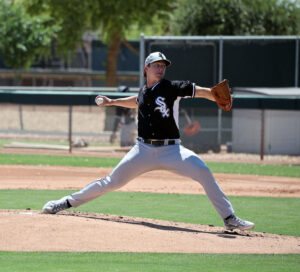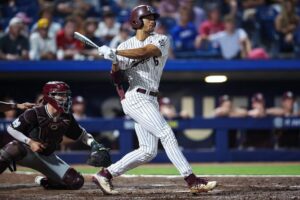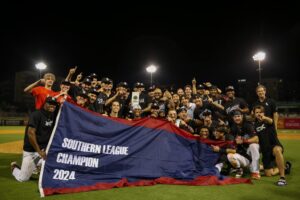Building a Foundation
The 1993 White Sox were the formidable team of my youth. With my age in single digits, the team had its own distinct characteristic of adolescence lending itself to familiarity. The concepts of free agency and arbitration had surely not been introduced to me at that point, but the team’s construction was easy to understand. Draft a Frank Thomas, a Robin Ventura, a Jack McDowell, an Alex Fernandez, and your team would mature into a force in a few, short years.
Over the next decade, I learned it would not always be that easy. Sure, there were a few success stories sprinkled in, but the concept of a farm system was not something that jumped off the page for a White Sox fan.
The 2005 squad featured two of the most prominent products of the organization in Joe Crede and Aaron Rowand but since, it has been very difficult to come up with a top ten list of success stories in White Sox player production, specifically on the position side.
Even when the White Sox did have a guy with high acclaim called up to the big leagues – looking at you Gordon Beckham, Joe Borchard, Brian Anderson (I’ll stop before I stir up too much anger) – they busted before the payout ever reached the amount of buzz they had received.
Therein lies the main reason why top 100 prospect lists went so long without being must-reads. I never put much stock in reading minor league box scores. The best possible outcome is the team would flip a top prospect for a proven commodity, so why get attached? I had gone well over a decade without giving much thought to anything minor league-related.
Then, The Rebuild began. Suddenly the White Sox were a feature of those top prospect lists instead of a semi-honorable mention. I was forced to educate myself on a portion of baseball I never allowed myself to get caught up in.
Which is a good portion of the reason why I took interest to joining FutureSox. Yes, I may be a little late to the party as the crown jewels of the rebuild are now part of the big club, but I do not want to let myself fall behind again. With joining the fantastic team here, I am taking it as an opportunity to bring my own level of baseball knowledge up a notch.
———————————————————-——————————————————————
So why not start with the basics? I am making my first article with FutureSox an introductory course to the minor leagues. I know the majority of FutureSox readers most likely already know this information, but hopefully with myself being new here, I’ll bring in some new readers as well. And maybe those readers also have not taken the time to learn the intricacies of baseball’s minor leagues. At least the minor leagues as they currently exist, before Rob Manfred decides to rip it all apart.
THE LEAGUES
ROOKIE
The Arizona and Gulf Coast Leagues are played at the team’s spring training complexes (hence where the league names come from). All teams have a representative in these two leagues except for the Colorado Rockies. The leagues get started right after the Rule 4 draft, as many of the new members to each team comprise these rosters. The league goes from mid-June to late August.
The Dominican Summer League is another rookie league which is comprised mostly of Latin American players that also plays from June to August. Each team has at least one representative club although the Brewers and Indians share a single affiliate.
Elijah Tatis, brother of Fernando Tatis Jr. will likely play another season in this league this summer as a member of the White Sox organization.
ROOKIE ADVANCED
The Appalachian and Pioneer Leagues comprise this next level whose players are a little more advanced than the rookie league.
The White Sox affiliate is the Great Falls Voyagers who are in the North Division along with affiliates from the Diamondbacks, Reds, and Royals.
The White Sox will have another relatively-high draft pick in 2020 at 11 who could very well wind up playing in the Pioneer League this summer. The Royals have the fourth pick in this summer’s draft so there may be a headliner in some of the team’s games this season as well. (The Reds pick 12th and the Diamondbacks pick 18th.)
Matthew Thompson (SP), Andrew Dalquist (SP), and James Beard (CF) – the 2-4 round picks in the 2019 draft will likely start the season in Great Falls following time in extended Spring Training.
CLASS A SHORT SEASON
The White Sox do not have an affiliate in either the New York Penn or Northwest Leagues. The league plays its games from June to September.
CLASS A
The Midwest and South Atlantic Leagues comprise this league. The White Sox affiliate is the Kannapolis Intimidators who play in the Northern division of the South Atlantic with teams who represent the Orioles, Rangers, Pirates, Mariners, Nationals, and Phillies.
Yolbert Sanchez (SS), a former Cuban teammate of Luis Robert, will be the guy to watch on the Intimidators to start 2020.
CLASS A ADVANCED
The Florida State, Eastern, and Carolina Leagues comprise the advanced portion of A-level minor leagues. The White Sox are represented by the Winston-Salem Dash in the Northern division of the Carolina League along with teams from the Rangers, Astros, Brewers, and Cubs.
The much-anticipated return to baseball by Jake Burger (1B) should (could?) occur at this level this season.
DOUBLE A
The Eastern, Texas, and Southern Leagues comprise this level. The White Sox are represented by the Birmingham Barons in the Southern League North Division along with affiliates from the Rays, Diamondbacks, Reds, and Cubs.
Birmingham will arguably be the most exciting White Sox farm club to follow this season. Andrew Vaughn is likely to start there as the headliner although his time will be short if he meets expectations. The Barons outfield brings a lot of potential in Micker Adolfo, Blake Rutherford, and Luis Basabe. Jonathan Stiever and Konnor Pilkington represent the next wave of starting pitchers in the system.
There could be a lot of future stars across the diamond as well. The Rays’ Wander Franco is the number one prospect on many sites and may start the season on the Montgomery Biscuits. The Rays also feature another top-20 prospect in middle infielder Vidal Brujan.
The Reds’ Jonathan India, the club’s top prospect, is likely to start in Double-A as well.
TRIPLE A
The Pacific Coast and the International Leagues split the Triple A level. The White Sox’ affiliate is the Charlotte Knights who share the South Division of the International League with affiliates from the Braves, Rays, and Orioles.
It is ultimately a good thing Luis Robert will start in Chicago but Charlotte fans will surely miss him. Nick Madrigal still will likely get at least a few more starts with the Knights. Dane Dunning and Luis Gonzalez are next up in who fans will be keeping an eye on.
The Knights have the misfortune for them, competitively, to be in a division with some of the top systems in all of baseball. They share this level with the Rays as well, which should include Brent Honeywell and two-way player Brendan McKay.
The Gwinnett Stripers in the Braves system might be the most talented at the level led by outfielders Cristian Pache and Drew Waters.
And lastly, the Orioles farm system is certain to improve as they continue the beginning stages of their rebuild. The top draft pick in 2019, Adley Rutschman, could possibly make it to Norfolk in 2020.
Want to know right away when we publish a new article? Type your email address in the box on the right-side bar (or at the bottom, if on a mobile device) and click the “Subscribe” button. Our list is completely spam free, and you can opt out at any time. Also, consider supporting FutureSox on Patreon! You can get early access to special articles and Patreon-only posts, in addition to more benefits you can read about here.






